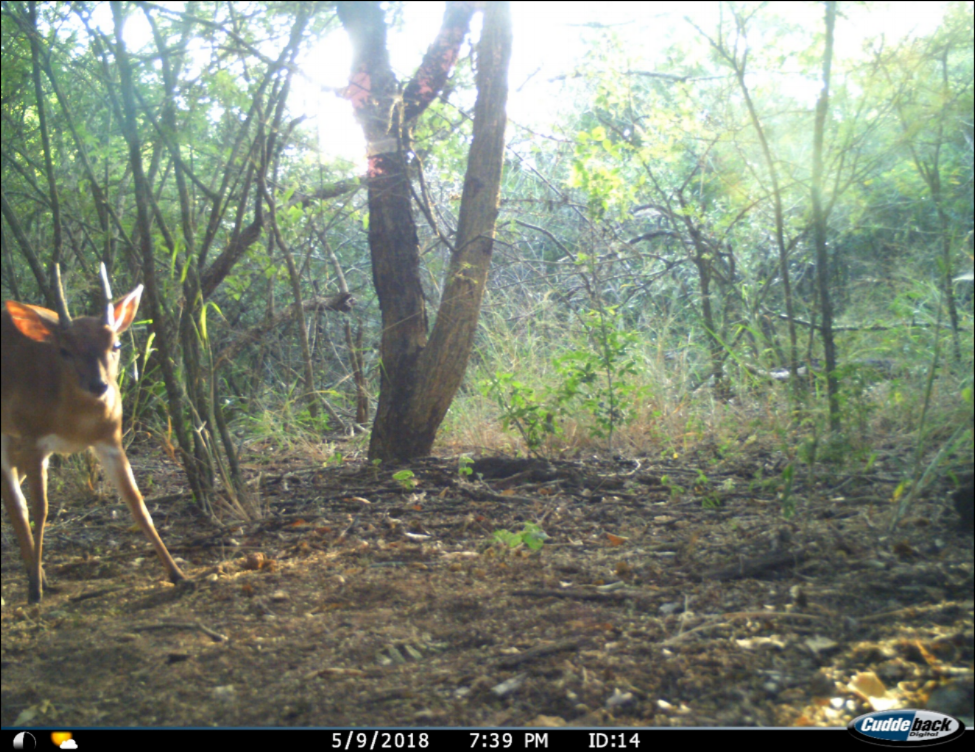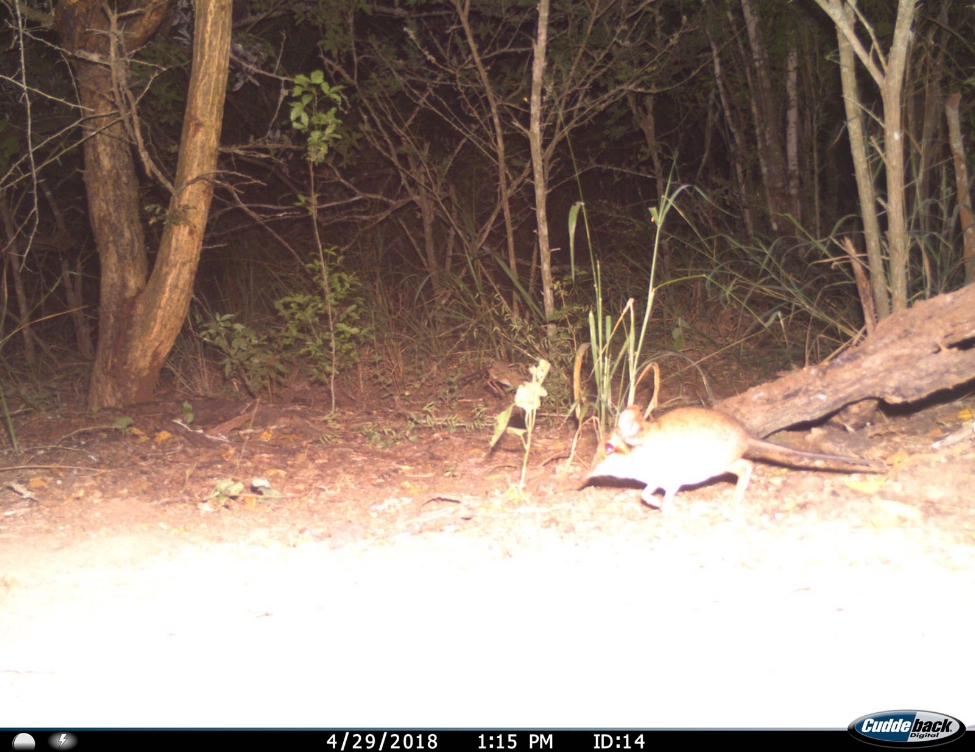TWO ENDANGERED SPECIES DISCOVERED AT UKUWELA
Wild Tomorrow Fund is very excited to announce our discovery that the Ukuwela Conservancy is home to two rare species: the suni antelope and the four-toed elephant shrew!
Our ecologist, Axel Hunnicutt, holding a suni (Neotragus moschatus) during research in 2016.
Over the last month, Wild Tomorrow Fund ecologist Axel Hunnicutt, together with the Wild Volunteers, set out to investigate the presence of small forest antelope on the Greater Ukuwela Nature Reserve, which includes Ukuwela and neighboring land: an area totaling 1878 acres (760 ha). Much to our surprise, though the use of camera-traps, we confirmed the presence of two rare and elusive species: the suni antelope and four-toed elephant shrew.
The Suni Antelope (Neotragus moschatus)
A male suni (Neotragus moschatus) caught on the camera trap survey at the Greater Ukuwela Conservancy earlier this month.
Standing no taller than a chihuahua and weighing less than a house cat, the suni is an extremely secretive species that slowly strolls through the lowest undergrowth of the thickest Zululand forests. Their large eyes and ears allow them to roam the forest at night and twilight hours, keeping a close eye and ear out for large snakes and birds of prey that target on them. In 2016, Axel’s regional research work on the suni helped to list the species as regionally endangered after he found serious causes for concern in the major populations in Zululand. Since 2015, Wild Tomorrow Fund has conducted research and monitoring programs on suni at Mun-Ya-Wana Game Reserve and we continue to lead suni conservation in South Africa.
The Four-toed Sengi (Petrodromus tetradactlyus)
A four-toed elephant shrew or "sengi" (Petrodromus tetradactlyus) seen on the camera trap survey at the Greater Ukuwela Conservancy this month.
The four-toed elephant shrew or “sengi” isn’t a shrew at all, and being the size of a smartphone it isn’t an elephant either. Originally called elephant shrews for their long trunk-like noses, they are actually more closely related to elephants than shrews. This fascinating creature is also one of the fastest small mammals, reaching almost 30 km per hour along racetrack-like paths on the forest floor. Nationally, the four-toed sengi is an endangered species as there is less than 264 km^2 of suitable habitat left for them and because their population continues to decline.
Four-toed sengi (Petrodromus tetradactlyus) distribution map. Source: wikipedia.com
Suni (Nesotragus moschatus) distribution map. Source: wikipedia.com
The suni antelope and elephant shrew are restricted to coastal forests and sand forests in South Africa. These forest types are quickly being destroyed or transformed by people and other animals. Ukuwela falls at the southern-most tip of their range and has several patches of remaining forests. We are formulating an intensive survey to determine how many occur on the conservancy and will implement population monitoring.
Our discovery of the suni and the four-toed elephant shrew on Ukuwela is extremely exciting and we are proud that they call it home. Thanks to your help, we will protect and conserve them and their habitat well into the future.




